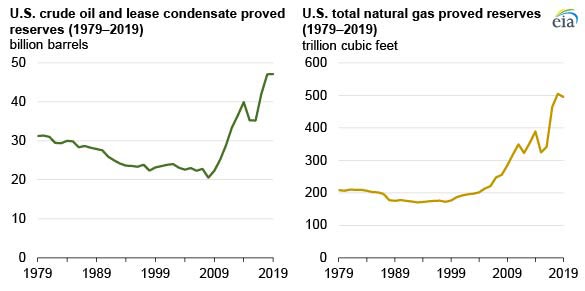
In 2019, proved U.S. reserves of crude oil and lease condensate increased by 0.1%, and proved natural gas reserves declined by 1.9%, according to the U.S. Energy Information Administration’s (EIA) recently released Proved Reserves of Crude Oil and Natural Gas in the United States, Year-End 2019 report. Proved reserves of oil and natural gas each rose annually in the United States by at least 9% in the previous two years (2017 and 2018).
Proved reserves are those volumes of oil and natural gas that geological and engineering data demonstrate with reasonable certainty to be recoverable in the future years under existing economic and operating conditions. Lower crude oil prices in 2019 caused many operators to revise their total proved reserves estimates downward even though proved reserves from extensions and discoveries increased slightly.
Operators in Alaska increased their proved reserves of crude oil and lease condensate by 259 million barrels in 2019, the largest net increase of all states. New Mexico had the second-largest net increase at 226 million barrels, and Texas had the third-largest increase at 179 million barrels. The most substantial increases in crude oil and lease condensate reserves in New Mexico and Texas came from development activity in the Permian Basin. The largest net decrease in proved reserves of crude oil and lease condensate in all states in 2019 was in Colorado: a decrease of 154 million barrels. Oklahoma and Utah had the second- and third-largest decreases at 142 million barrels and 134 million barrels, respectively.




Follow us on social media: